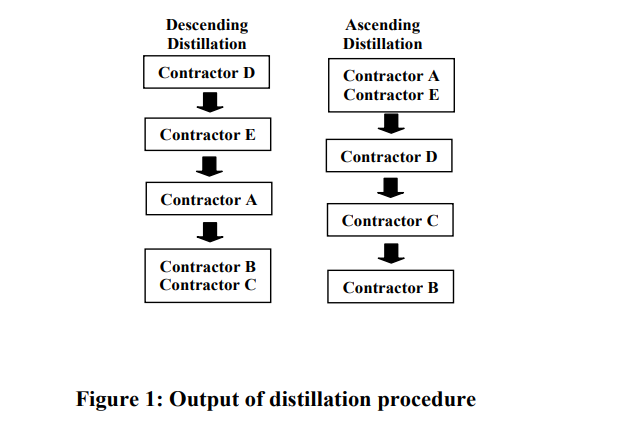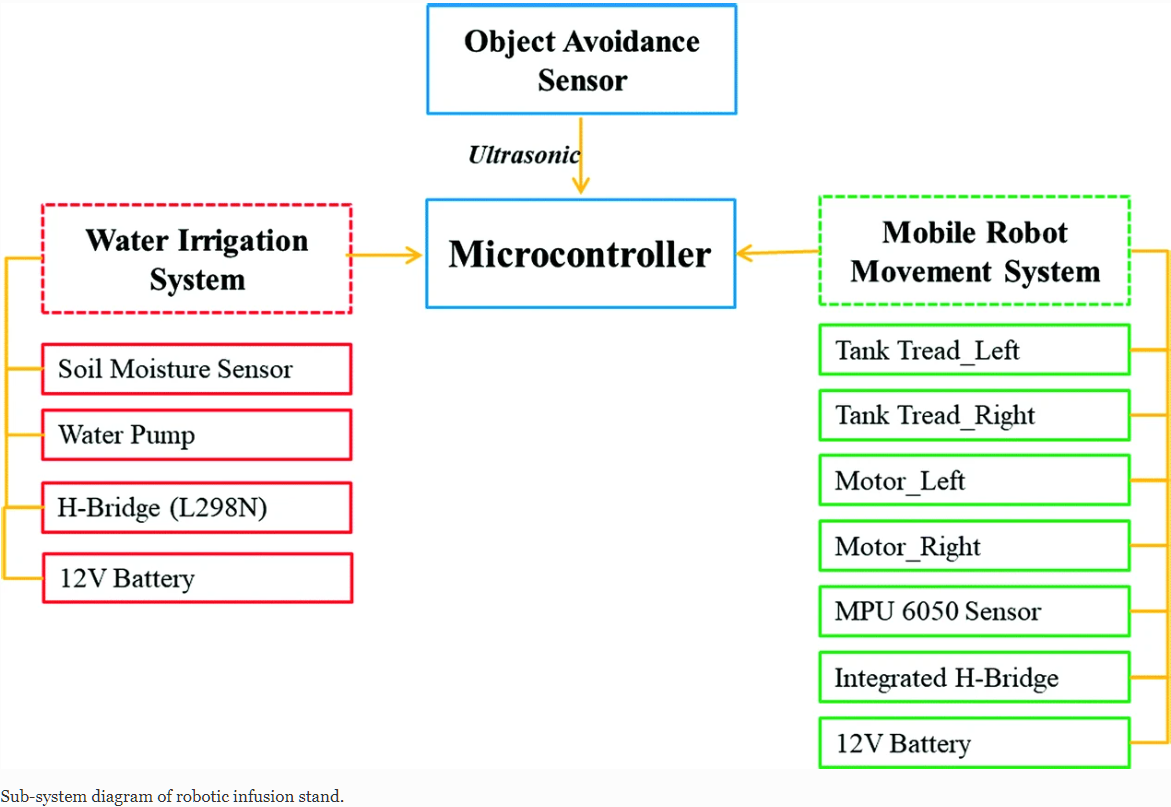
An application of ELECTRE III to contractor selection
Contractor selection is carried out in order to choose a competent and capable contractor to do the work. To help in this selection, baselines are established to ensure that the contractors have the required skills, resources, and abilities to execute the project. Contractor selection is a multiple criteria decision making wherein several criteria are required to be evaluated simultaneously. This paper proposes a decisionmaking model for contractor selection utilizing ELECTRE III modeling. The steps of ELECTRE III model include; estimation of concordance indices, estimation of discordance

Optimal Proportional Integral Derivative (PID) Controller Design for Smart Irrigation Mobile Robot with Soil Moisture Sensor
Uncertainty on the condition of the weather always give a major headache to the agricultural industry as the cultivated plant that is grown on a large scale commercially rely on the condition of the weather. Therefore, to reduce the interdependency on the weather itself, a recommendation to develop a prototypic mobile robot for smart irrigation is submitted. Smart irrigation system is an essential tool from yield point of view and scarcity of the water. This smart irrigation system adopts a soil moisture sensor to measure the moisture content of the soil and automatically provide a signal to
Implementation of PID Controller with PSO Tuning for Autonomous Vehicle
In the use of automatic control and its optimization methods, this research discusses how Proportional Integral Derivative (PID) controller is used to provide a smooth auto-parking for an electrical autonomous car. Different tuning methods are shown, discussed, and applied to the system looking forward to enhancing its performance. Time domain specifications are used as a criterion of comparison between tuning methods in order to select the best tuning method to the system with a proper cost function. Results show that Particle Swarm Optimization (PSO) method gives the best results according
Integration of a 2-D periodic nanopattern into thin-film polycrystalline silicon solar cells by nanoimprint lithography
The integration of 2-D periodic nanopattern defined by nanoimprint lithography and dry etching into aluminum-induced crystallization-based polycrystalline silicon thin-film solar cells is investigated experimentally. Compared with the unpatterned cell, an increase of 6% in the light absorption has been achieved thanks to the nanopattern, which, in turn, increased the short-circuit current from 20.6 to 23.8 mA/cm2. The efficiency, on the other hand, has limitedly increased from 6.4% to 6.7%. We show using the transfer length method that the surface topography modification caused by the
Implementing earned value management using bridge information modeling
Building Information Modeling (BIM) has widely become an effective tool in engineering and construction fields. It could be used in: generating shop drawings; detecting clashes; estimating quantities; and controlling documents. Applying BIM technology on bridges is named Bridge Information Modeling (BrIM). Bridge Information Modeling (BrIM) is an intelligent representation of bridges since it contains all information needed about bridges through their whole lifecycle. This paper presents the use of Building Information Modeling in cost and time management of infrastructure bridges. BIM-based
Influence of Periodic Surface Nanopatterning Profiles on Series Resistance in Thin-Film Crystalline Silicon Heterojunction Solar Cells
In the frame of the development of thin crystalline silicon solar cell technologies, surface nanopatterning of silicon is gaining importance. Its impact on the material quality is, however, not yet fully controlled.We investigate here the influence of surface nanotexturing on the series resistance of a contacting scheme relevant for thin-film crystalline silicon heterojunction solar cells. Twodimensional periodic nanotextures are fabricated using a combination of nanoimprint lithography and either dry or wet etching, while random pyramid texturing is used for benchmarking. We compare these
Improved memristor-based relaxation oscillator
This paper presents an improved memristor-based relaxation oscillator which offers higher frequency and wider tunning range than the existing reactance-less oscillators. It also has the capability of operating on two positive supplies or alternatively a positive and negative supply. Furthermore, it has the advantage that it can be fully integrated on-chip providing an area-efficient solution. On the other hand, The oscillation concept is discussed then a complete mathematical analysis of the proposed oscillator is introduced. Furthermore, the power consumption of the new relaxation circuit is
Stochastic modeling of 2D photonic crystals
Due to the fabrication processes, inaccurate manufacturing of the photonic crystals (PCs) might occur which affect their performance. In this paper, we examine the effects of tolerance variations of the radii of the rods and the permittivity of the material of the two-dimensional PCs on their performance. The presented stochastic analysis relies on plane wave expansion method and Mote Carlo simulations. We focus on two structures, namely Si-Rods PCs and Air-Holes PCs. Numerical results show—for both structures—that uncertainties in the dimensions of the PCs have higher impact on its photonic

Multistep deposition of Cu2Si(S,Se)3 and Cu2ZnSiSe4high band gap absorber materials for thin film solar cells
Cu2ZnSi(S,Se)4 and Cu2Si(S,Se)3 are potential materials to obtain cost effective high band gap absorbers for tandem thin film solar cell devices. A method to synthesize Cu2SiS3, Cu2SiSe3and Cu2ZnSiSe4thin film absorbers is proposed. This method is based on a multistep process, using sequential deposition and annealing processes. X-ray diffraction analysis performed on the final thin films have confirmed the presence of the Cu2Si(S,Se)3 and Cu2ZnSiSe4phases. Scanning electron microscopy images revealed the formation of polycrystalline layers with grains size up to 1 μm. The band gap of the

Nanostructured Mg substituted Mn-Zn ferrites: A magnetic recyclable catalyst for outstanding photocatalytic and antimicrobial potentials
With recently increasing the environmental problems and expected energy crisis, it is necessary to synthesis a low-cost, efficient, and UV-light responsive photocatalyst for contaminants’ degradation. The nanostructured spinel ferrite Mn0.5Zn0.5-xMgxFe2O4 NPs (x = 0.0, 0.125, 0.25, 0.375 and 0.50) were synthesized via the sol-gel method. The crystallite size was lied in nano regime ranging from 21.8 to 36.5 nm. The surface chemical composition of the Mn0.5Zn0.5-xMgxFe2O4 NPs was investigated via XPS analysis. Mossbauer spectra showed that the peaks were shifted to higher values of the maximum
Pagination
- Page 1
- Next page ››
